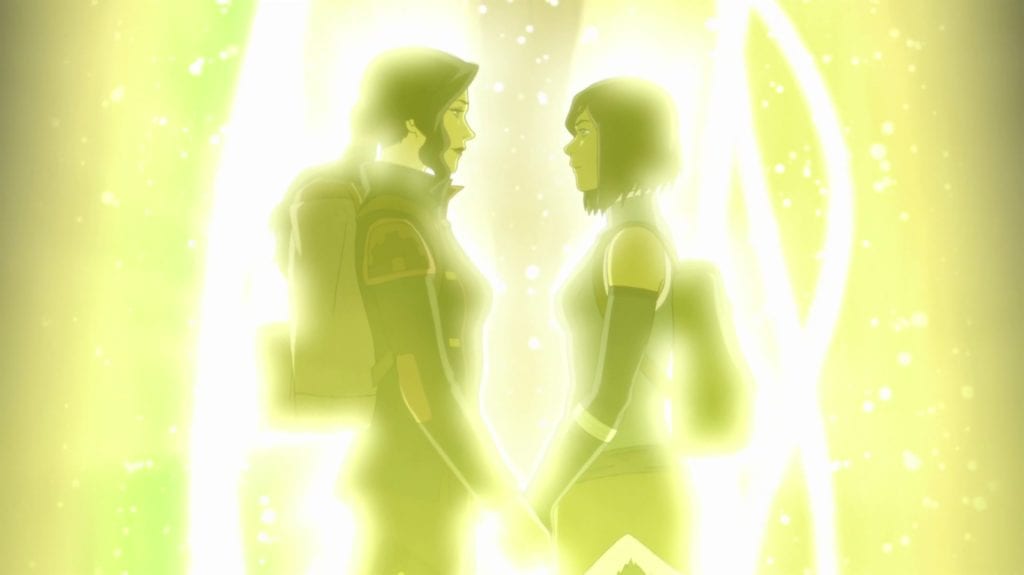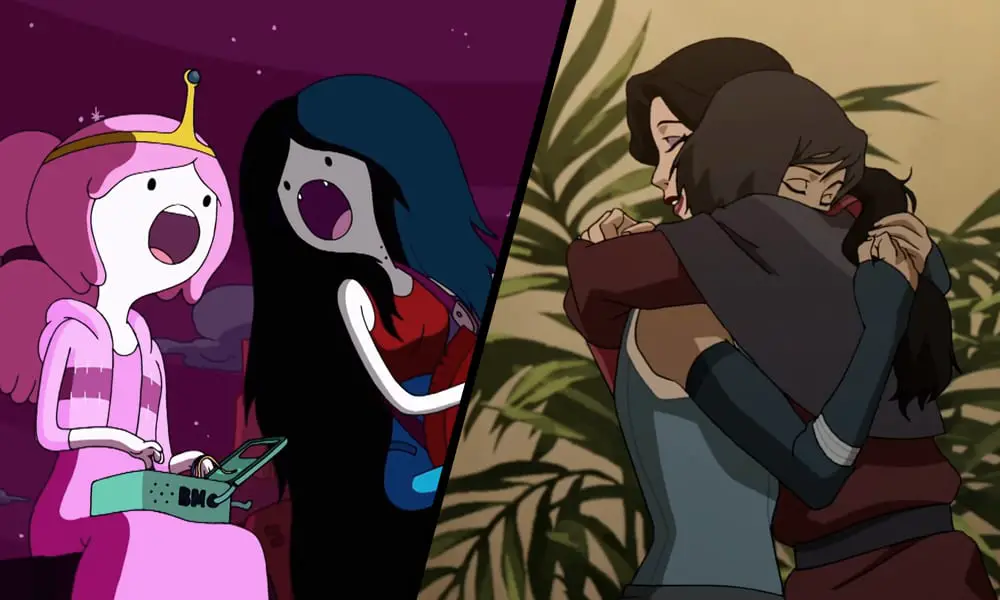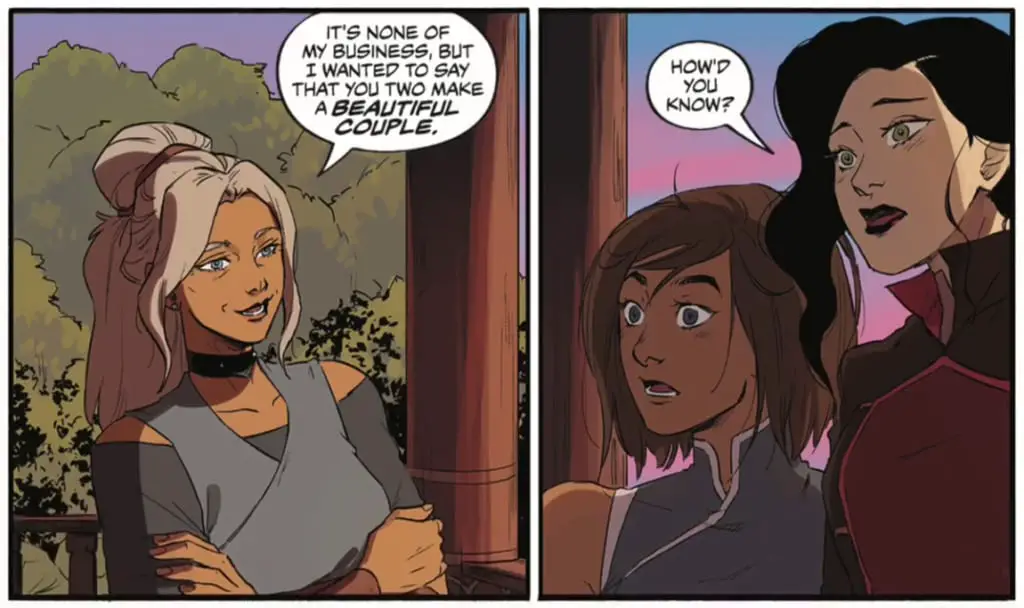They called it the ship of dreams. Well, maybe only Dan called it that. But Korrasami is an incredibly popular ship around The Fandomentals, and for good reason. For many of the writers on our staff, it was the first time they’d seen queer representation on a show ostensible aimed at kids. It meant a lot to us back in 2014, and it means a lot to us now. As we see prepare to relive the roller-coaster of The Legend of Korra, we gathered together our favorite articles on the subject.
Pushing the Envelope of Kids’ Cartoons with Korrasami

In what might be one of our earliest articles on the subject, Seher put the importance of Korrasami into the greater context of Nickelodeon and children’s TV as a whole.
“Then, the series finale blew all of that out of the water with a masterful final battle between Korra and Kuvira, a wedding between Varrick and Zhu Li (they did the thing), and—after all the characters have their “bows”—Korra and Asami walk off together into the sunset.
Well, the Spirit World anyways. Which is a pretty BIG DEAL.
When was the last time that we’ve seen ourselves represented?”
On a cartoon no less.
Representation Won’t Scare Off the Kids

In a similar article, Julia looked at how kids respond to LGBT representation in their media. Spoiler alert: they’re cool with it.
“And, for some reason, there’s this idea that groups like that only want to hear stories about themselves, that a boy like Gregory would only be able to connect to Aang, or Meelo in a pinch. But it’s not true because, notwithstanding his love of fart-bending, he adores Korra. He loves how strong she is. He is more than willing to pretend to be her while play-fighting. He likes Asami too, and how smart she is. He wasn’t alienated by the fact that Bolin was in the wrong in that fight with Opal, and wasn’t freaked out by how in charge Suyin was. This story was about Korra, and that was okay by Gregory.”
No, I’m Still Not Over Korrasami

Even though Kylie published this about five years ago, it’s still safe to say she still isn’t over Korrasami.
“It was as if Asami was scripted to be Korra’s perfect balance; no two characters could possibly be more suited for one another. Which makes the fact that they were originally scripted as “rivals”competing in a love triangle even more hilarious. And again…this is why the Korrasami ending “felt right.” It was thematically cohesive not just with the season, but with everything Bryke had built.”
My First Queer: Adventure Time and The Legend of Korra

Korrasami was groundbreaking for the industry, but it also meant a lot of things to queer people who felt represented for the first time on-screen. In her contribution to our My First Queer series of articles, Szofi discusses how Korrasami and Adventure Time’s Bubbline helped her come to terms with herself and with the idea of healthy queer couples.
“To love the dynamic you’re seeing and hope for it to turn out a certain way is something; to have it validated by the creators and shown onscreen is something else entirely. And look, I get it, Korrasami is not immune to criticism. Censorship or not, arguably they could have done slightly more when it came to the build-up, started developing it sooner, et cetera. It wasn’t perfect, but it happened. And it wasn’t only a milestone for kids’ television but also a personal one, because suddenly a deep friendship between girls could become something else. It was valid, it could happen. Not only that, but I clearly wasn’t alone in picking up on the signs.”
Lots of Queer Thoughts on The Fandomentalist

Gretchen, Julia, and Kylie are joined by Griffin in a very focused episode where they chat about the new Legend of Korra comics, as well as broader LGBT+ representation and the worldbuilding choices surrounding it.
Images via Nickelodeon and Dark Horse Comics

